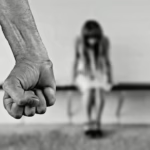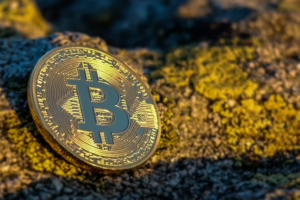Beyond Stereotypes: The True Meaning of Prejudice Explained
Introduction
Prejudice is a complex and multifaceted phenomenon that goes far beyond mere stereotypes. It permeates cultures and societies, influencing interactions and relationships on various levels. Understanding the true nature of prejudice requires deep exploration of its origins, manifestations, and impacts on individuals and communities. This article aims to dissect the intricacies of prejudice, challenge common misconceptions, and illuminate pathways for fostering more inclusive societies.
Defining Prejudice
Prejudice can be defined as a preconceived opinion or judgment about an individual or group that is not based on reason or actual experience. It often manifests as an irrational attitude toward a particular group, leading to discrimination and social inequality. While stereotypes can be a component of prejudice, the latter includes a broader range of emotional and cognitive reactions that shape societal dynamics.
The Roots of Prejudice
Prejudice often stems from a combination of social, psychological, and cultural factors:
-
Socialization: Individuals are socialized into their cultures and communities where certain beliefs and values are upheld. This can create bias against those who differ from the mainstream.
-
Fear of the Unknown: Humans have a natural tendency to fear what they do not understand. This fear can lead to prejudice against those who possess different backgrounds, ideologies, or lifestyles.
-
Cognitive Biases: Mental shortcuts, such as in-group favoritism and out-group hostility, can lead individuals to develop negative stereotypes and prejudicial attitudes.
-
Historical Context: Historical events and traumas can shape collective attitudes, leading to long-lasting biases that persist even when the initial context has changed.
The Manifestations of Prejudice
Prejudice manifests in various forms, ranging from subtle biases to overt discrimination. Understanding these manifestations can help in identifying and addressing them effectively:
-
Racial and Ethnic Prejudice: Various groups face discrimination based on their race or ethnicity. This form of prejudice often leads to systemic inequality in various aspects of life, including employment, education, and justice.
-
Gender Prejudice: Gender-based prejudice manifests as sexism and can result in unequal treatment and opportunities for individuals based on their gender. This often includes stereotypes about roles and capabilities.
-
Religious Prejudice: Discrimination based on religious beliefs can lead to social exclusion, violence, and a lack of understanding among different faith communities.
-
Ageism: Prejudice based on age can affect both younger and older individuals, leading to misconceptions about capabilities and contributions to society.
-
Ableism: Discrimination against people with disabilities is another form of prejudice, often rooted in stereotypes about capability and productivity.
The Psychology of Prejudice
To fully understand prejudice, one must delve into the psychological mechanisms that underpin it. Studies in social psychology have identified several cognitive biases that contribute to prejudiced attitudes:
-
Confirmation Bias: This occurs when individuals seek out information that confirms their existing beliefs and ignore information that contradicts them. This can perpetuate stereotypes and reinforce prejudiced attitudes.
-
Attribution Bias: This refers to the tendency to attribute negative behaviors of individuals from marginalized groups to their character while attributing negative behaviors of individuals from favored groups to situational factors.
-
Just-World Hypothesis: This is the belief that the world is inherently fair, leading individuals to rationalize injustices as deserved outcomes for those who are disadvantaged.
-
In-group vs. Out-group Dynamics: Humans tend to favor their in-group, leading to biased attitudes toward those considered “other.” This often manifests as tribalism, where loyalty to one’s group supersedes empathy for others.
Stereotypes vs. Prejudice
Stereotypes and prejudice are often conflated but represent distinct concepts. Stereotypes are oversimplified and generalized ideas about groups, which can be either positive or negative. Prejudice, however, is an affective response—an emotional bias that may be fueled by these stereotypes.
The Role of Media and Representation
Media plays a significant role in shaping perceptions of different groups. Misrepresentation or lack of representation can perpetuate stereotypes and deepen prejudice. Conversely, positive representation can help challenge existing biases and promote understanding. The impact of media narratives highlights the responsibility of content creators in shaping social attitudes.
Consequences of Prejudice
The effects of prejudice are far-reaching, impacting individuals and societies at multiple levels:
-
Mental Health: Individuals who face discrimination often experience anxiety, depression, and low self-esteem. The psychological toll of being subjected to prejudice can be significant and long-lasting.
-
Social Cohesion: Prejudice can lead to social fragmentation, where communities become polarized and divided. This can foster environments of hostility and fear, inhibiting cooperation and collaboration.
-
Economic Costs: Discrimination in the workplace due to prejudice can result in unequal opportunities, impacting economic productivity and growth. Diverse teams have been shown to drive innovation and improve problem-solving; thus, prejudice can stifle economic potential.
-
Injustice and Inequality: Systemic prejudice leads to unequal treatment in legal and social frameworks, perpetuating cycles of disadvantage for marginalized groups.
Challenging Prejudice: Pathways to Change
Addressing prejudice requires a multifaceted approach, focusing on education, advocacy, and self-awareness:
-
Education: Teaching about diversity and inclusion can help dismantle stereotypes and promote understanding. This includes incorporating diverse histories and perspectives into curricula.
-
Self-reflection: Encouraging individuals to examine their own biases can lead to greater awareness and ultimately foster personal change. Tools such as implicit bias tests can be beneficial.
-
Engagement: Dialogue and interactions between different groups can help challenge biases. Sharing personal stories humanizes individuals and fosters empathy.
-
Advocacy for Policy Change: Supporting policies that promote equity and inclusivity can help dismantle systemic barriers that perpetuate prejudice. This includes advocating for equal rights, representation, and access to resources.
-
Community Initiatives: Grassroots efforts can be effective in promoting understanding and cooperation among diverse community members. Initiatives that focus on collaboration can break down barriers and build social cohesion.
Conclusion
Prejudice remains a persistent issue in our societies, often hidden beneath layers of stereotypes. By understanding its true meaning and manifestations, we can begin to dismantle the barriers it creates. Education, dialogue, and self-awareness are key to fostering more inclusive communities. As we strive for a more equitable world, it is essential to challenge our assumptions, confront our biases, and work towards understanding.
Footnotes
-
Glick, P., & Fiske, S. T. (2001). An Ambivalent Alliance: Hostile and Benevolent Sexism in Gender Relations. Journal of Personality and Social Psychology, 81(2), 491.
-
Dunning, D., & Hayes, A. (1996). Are People Aware of Their Errors? A Factual Review of the Humble, the Overconfident, and the Unskilled. Journal of Personality and Social Psychology, 71(1), 122-135.
-
Allport, G. W. (1954). The Nature of Prejudice. Addison-Wesley.
-
Tajfel, H., & Turner, J. C. (1979). An Integrative Theory of Intergroup Conflict. In W. G. Austin & S. Worchel (Eds.), The Social Psychology of Intergroup Relations (33-47). Brooks/Cole.
-
Bobo, L., & Hutchings, V. L. (1996). Perceptions of Racial Group Competition: Extending Blumer’s Theory of Group Position to a Multiracial Social Context. Social Problems, 43(3), 272-290.
-
Campbell, D. T. (1958). Common Ingroup Identity: A New Look at the Symbolic Interactionist Perspective. Symbolic Interaction, 2(1), 12-24.
-
Gaertner, S. L., & Dovidio, J. F. (2005). Understanding and Reducing Ethnic Prejudice: The Common Ingroup Identity Model. Journal of Social Issues, 61(3), 615-639.

























Add Comment